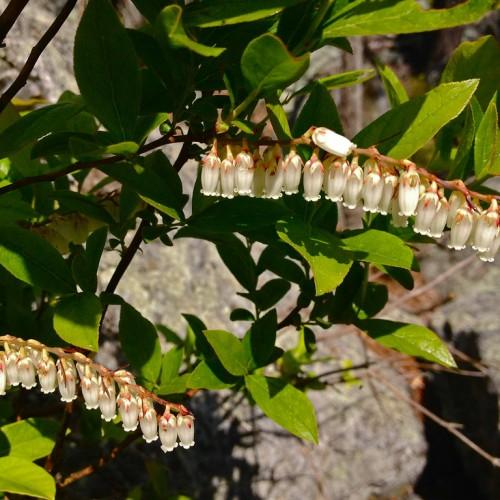
Eubotrys
Eubotrys racemosa
Cycle:
Perennial
Watering:
Frequent
Hardiness Zone:
5 - 9
Flowers:
Flowers
Sun:
Part shade
Fruits:
Fruits Ready In Fall
Leaf:
Yes
Growth Rate:
Low
Maintenance:
Low
Salt Tolerant:
Yes
Care Level:
Medium
watering
Eubotrys plants should be watered once a week with about 1 inch of water per plant. Since Eubotrys plants are drought tolerant, they should be allowed to become slightly dry between waterings. If you live in an area where it does not rain regularly, you may need to supplement with additional waterings. As a general rule of thumb, Eubotrys should receive water when the top few inches of soil are dry. Be sure not to over-water, as too much moisture can lead to root rot or other problems. Additionally, it's important to regularly check for drainage problems – if you notice excess moisture or water sitting on the surface of the soil, try to improve drainage by adding products such as pebbles, or relocating the pot to a different spot.
sunlight
Eubotrys racemosa, commonly known as Fletcher’s fleabane, thrives in full sunlight and may even benefit from some light afternoon shade in hotter climates. It needs at least 6 hours of direct sunlight per day, preferably more. It can survive in partial shade but will not produce as many flowers and will not be as healthy as it would in a full sun location. During the summer, morning sun and some afternoon shade is best. In winter, however, full sun is preferable.
pruning
Eubotrys, or commonly known as fragrant climbing lily, should be pruned once a year to keep it healthy and robust. Prune the plant after it has finished blooming in early to mid-summer. Pruning should be done carefully to remove any dead or damaged branches. Prune the branches that extend too far out or are crossing over and rubbing against each other. Make sure to prune stems that are thin or thick near the bottom of the plant. Also remove any suckers or shoots that are growing near the bottom of the trunk. Pruning should be done back to the main branch or a lateral branch, leaving a third of the stem intact to help the growth of new branches. Make sure not to over-prune the plant as it will take away from the desired shape, and too much pruning can weaken the plant.
